Step-by-Step: Getting Started With Online Guitar Lessons
Learning to play the guitar online can be an incredibly rewarding experience, and “Step-by-Step: Getting Started With Online Guitar Lessons” is your ultimate guide to making that journey smooth and enjoyable. You’ll discover the best platforms, essential gear, and practical tips to set you on the right path to strumming your first chord. Whether you’re a complete beginner or just looking to refine your skills, this article provides clear and friendly instruction to ensure you make the most of your online lessons. Let’s get those fingers moving and those chords singing! Have you ever thought about learning to play the guitar online? Whether you’re a complete beginner or looking to advance your skills, online guitar lessons can be a convenient and effective way to achieve your musical goals. This guide will walk you through everything you need to know to get started with online guitar lessons.
Why Choose Online Guitar Lessons?
Online guitar lessons offer several advantages over traditional, in-person lessons. They’re flexible, allowing you to learn at your own pace and schedule. Plus, you’ll have access to a wide variety of resources and expert instructors from around the world.
Flexibility and Convenience
Perhaps the biggest perk of online guitar lessons is the flexibility they offer. You can learn at a time that suits you best, whether that’s early in the morning, late at night, or during lunch breaks.
Access to a Range of Instructors and Resources
With online lessons, you aren’t limited to local instructors. You can find a teacher who specializes in the style of guitar you’re interested in, whether that’s classical, jazz, rock, or blues.
Getting the Right Equipment
Before you dive into your first lesson, you’ll need some basic equipment. Don’t worry; you don’t need to break the bank to get started.
Choosing a Guitar
First things first, you’ll need a guitar. If you’re just starting out, a decent beginner guitar is perfect. Here’s a quick comparison between acoustic and electric guitars to help you decide.
| Feature | Acoustic Guitar | Electric Guitar |
|---|---|---|
| Price | Generally less expensive | Can be more costly |
| Ease of Play | Can be tougher on fingers | Generally easier to play |
| Sound | Natural and warm | Requires an amplifier |
| Portability | Portable and easy to carry | Less portable due to amp |
Necessary Accessories
Aside from your guitar, a few accessories are essential for getting the most out of your lessons.
- Tuner: Helps you keep your guitar in tune.
- Capo: Allows you to change the pitch of your guitar easily.
- Picks: Helps in playing with more precision and speed.
- Guitar Stand: Keeps your instrument safe and accessible.
Setting Up Your Space
A quiet, comfortable space will make your learning experience more enjoyable. Make sure you have a good internet connection, a chair, and a music stand or desk to place your sheet music or device.
Selecting the Right Online Platform
Choosing the right online platform for your guitar lessons can be daunting because there are so many options available. Each platform has its unique features, so it’s essential to find one that fits your needs.
Popular Online Guitar Learning Platforms
Here’s a look at a few popular platforms to get you started:
| Platform | Features | Cost |
|---|---|---|
| Fender Play | User-friendly, structured lessons | Monthly/Annual Subscription |
| Guitar Tricks | Large library of songs and genres | Monthly Subscription |
| JamPlay | Lessons from multiple instructors | Monthly Subscription |
| Justin Guitar | Free lessons supported by donations | Free/$ for premium content |
Free vs. Paid Services
Free services can be a great way to get your feet wet, but they often come with limitations. Paid services typically offer more comprehensive lessons, structured courses, and higher-quality video and audio.

Understanding the Basics
Before you jump into learning songs, it’s essential to understand the basics. This foundational knowledge will make your learning experience more fruitful and less frustrating.
Learn Guitar Anatomy
Familiarize yourself with the different parts of a guitar. Terms like frets, headstock, and bridge can seem confusing at first, but knowing them will help you follow along in lessons more easily.
Basic Guitar Techniques
Start with basic techniques such as strumming, fingerpicking, and chords. These are fundamental skills that you’ll build on as you progress.
Strumming
Strumming is the act of brushing your pick or fingers across the strings to produce a sound. Start with simple down strokes before moving to more complex patterns.
Fingerpicking
Fingerpicking involves playing individual strings with your fingers rather than a pick. This technique allows for more intricate and melodic playing.
Chords
Chords are combinations of notes played simultaneously. Learn basic chords like E, A, D, G, C, and F to start playing simple songs.
Practice Makes Perfect
To see progress, regular practice is essential. It’s better to practice for a short time every day than to cram for hours once a week.
Setting a Practice Schedule
Develop a practice schedule that works for you. Consistency is key. Even just 15-30 minutes a day can make a big difference.
Setting Goals
Setting short-term and long-term goals can help keep you motivated. A short-term goal might be to learn a new chord, while a long-term goal could be to play your favorite song.
Tracking Your Progress
Keeping track of your progress is a great way to stay motivated. Use a practice journal to note what you’ve learned and what you need to work on.
Recording Yourself
Recording your practice sessions can provide valuable feedback. You’ll be able to hear your progress over time and identify areas for improvement.
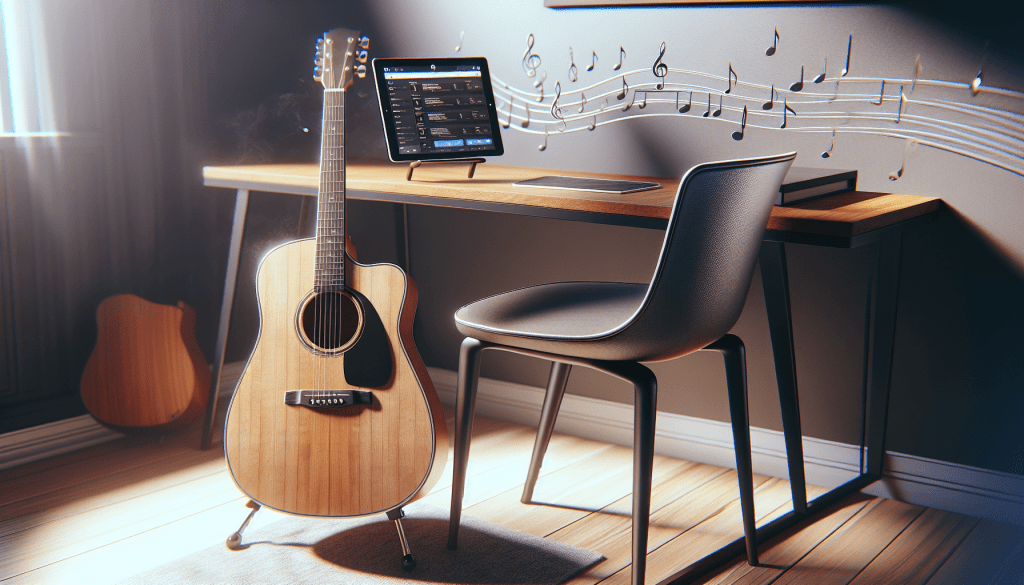
Finding a Community
Although online learning is mostly individual, finding a community can greatly enrich your experience. Look for online forums, social media groups, or even local clubs.
Online Forums
Platforms like Reddit and dedicated guitar forums are excellent places to ask questions, share tips, and get feedback from fellow learners.
Social Media Groups
Facebook and other social media sites have numerous groups dedicated to guitar enthusiasts. Joining these groups can provide additional resources and support.
Overcoming Challenges
Learning guitar, like any new skill, comes with its challenges. It’s vital to know how to overcome these to keep progressing.
Finger Pain
It’s common to experience some finger pain when you start learning the guitar. This is usually due to the strings pressing against your fingertips. Over time, you’ll develop calluses that will make playing less painful.
Frustration and Plateaus
There will be times when you feel like you’re not making any progress. During these periods, it’s essential to stay patient and keep practicing. Sometimes focusing on something new or revisiting basics can help you overcome a plateau.
Expanding Your Skills
Once you’ve grasped the basics, you can start expanding your skill set. Dive deeper into theory, learn new styles, and explore different techniques.
Music Theory Basics
Understanding basic music theory can significantly enhance your playing. Topics like scales, intervals, and keys can provide a deeper understanding of how music works.
Exploring Different Styles
After mastering some basics, try learning different styles of music. This will make you a more versatile player and can be a lot of fun. Whether it’s blues, jazz, classical, or rock, each style has its unique techniques and challenges.
Advanced Techniques
Once you’re comfortable with the basics, you can start exploring more advanced techniques like hammer-ons, pull-offs, slides, and bends. These can add expression and flair to your playing.
Putting It All Together: Learning Songs
One of the most enjoyable aspects of learning the guitar is playing your favorite songs. Start with simple songs and gradually move to more complex pieces as your skills improve.
Choosing Beginner-Friendly Songs
Pick songs that are easy to play but enjoyable. Simple chord progressions and strumming patterns are best for beginners. Songs like “Horse with No Name” by America or “Wonderwall” by Oasis are great for new learners.
Breaking Down Songs
When learning a new song, break it down into smaller, manageable sections. Start with the chords or verses before moving on to the chorus or bridge.
Seeking Feedback
Don’t underestimate the value of feedback. Whether it’s from an online community, a friend, or a professional instructor, constructive criticism can help you improve much faster.
Self-Assessment
Use your recordings to assess your progress. Identify specific areas where you need to improve and focus your practice sessions on those aspects.
Instructor Feedback
If you’re taking lessons through a platform that offers instructor feedback, take full advantage of it. The instructor can provide personalized tips and corrections that can be very beneficial.
Long-Term Learning
Learning guitar is a journey that doesn’t end. There’s always something new to learn, whether it’s a new song, technique, or style.
Setting New Goals
As you achieve your initial goals, set new ones to keep challenging yourself. This could be learning a new genre, mastering a difficult song, or composing your own music.
Staying Motivated
Keeping your motivation levels high is crucial. Playing along with backing tracks, joining a band, or performing for friends and family can keep your excitement alive.
Conclusion
Getting started with online guitar lessons is an exciting venture that offers flexibility, a myriad of resources, and the ability to learn at your own pace. By choosing the right equipment, setting up a suitable learning space, selecting a fitting online platform, and committing to regular practice, you’ll set yourself up for long-term success. Remember, the key is persistence and enjoyment. Happy playing!

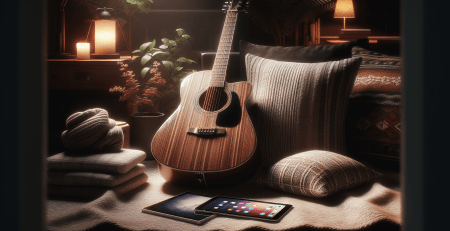
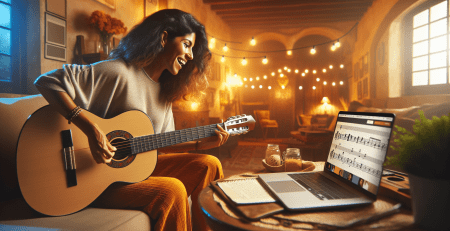
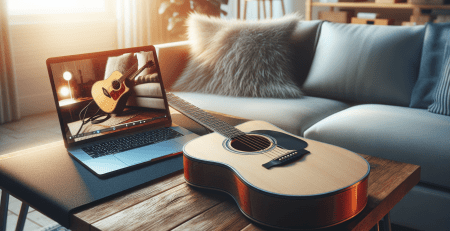
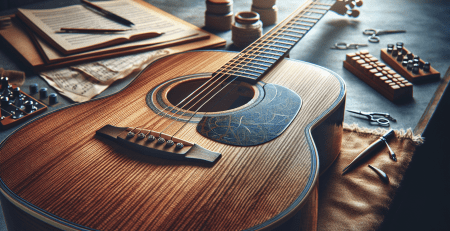
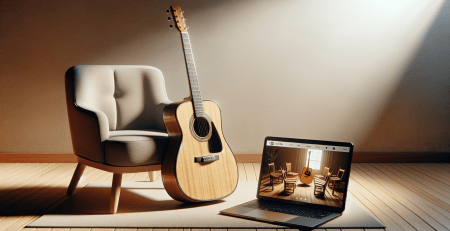
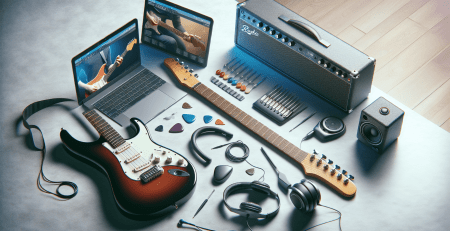
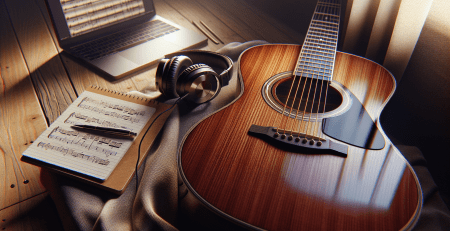
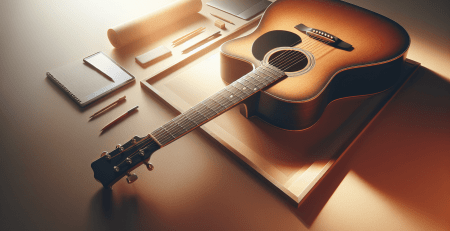

Leave a Reply